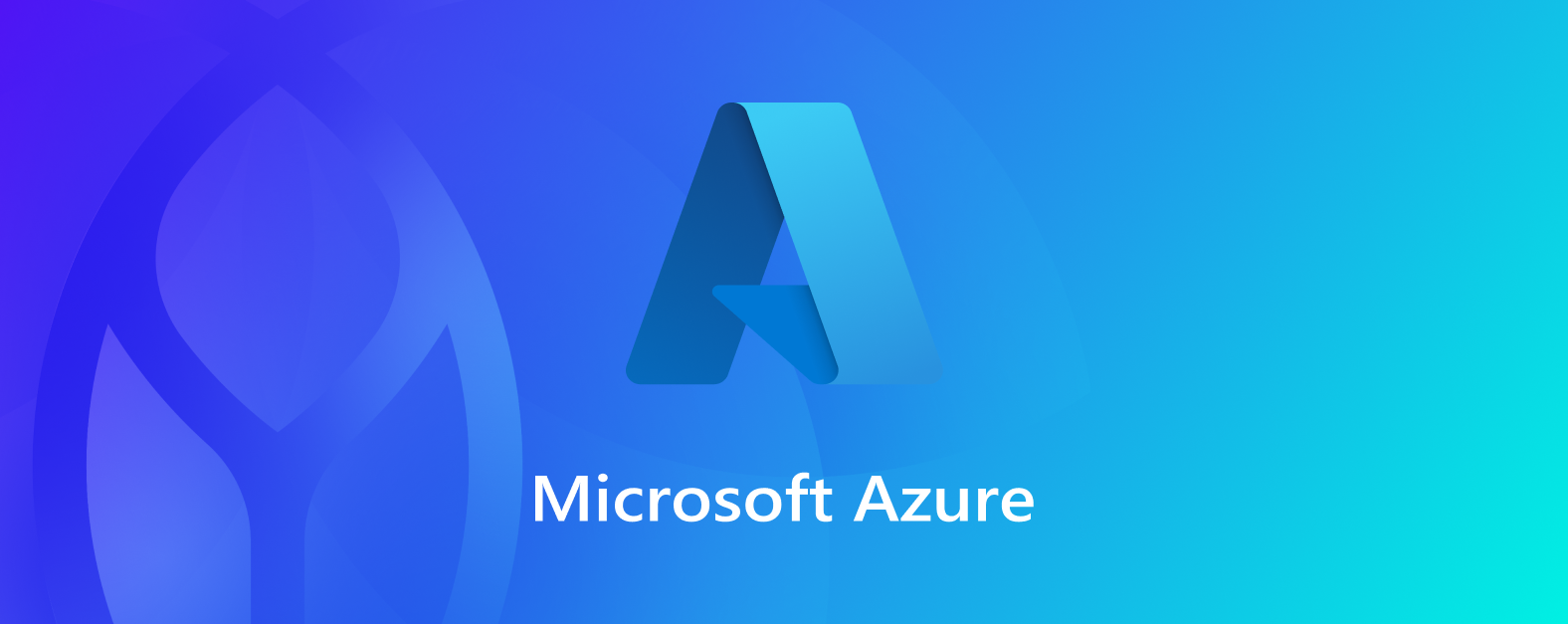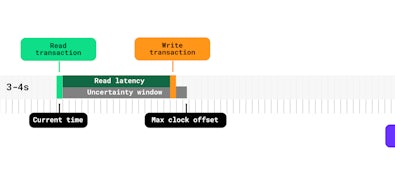
Today we released a series of exciting updates to give you even more flexibility to run CockroachDB how you want, where you want, more efficiently than ever before.
Customers often tell us they want the benefits of the cloud (elastic scale, consumption-based costs, operational ease of managed services, etc.), without the drawbacks of being locked-in to a single provider’s platform or proprietary services. We built CockroachDB from the beginning to maximize flexibility and control while still delivering the automation and efficiency we have all come to expect from cloud-native tools. The new capabilities we’ve made available today strengthen those values.
Here are the highlights of what’s new today:
- CockroachDB is now available as-a-service on Microsoft Azure. This release makes CockroachDB one of the select few distributed SQL database services available on all three major cloud providers.
- You can now distribute data across multiple cloud regions in CockroachDB serverless. With this update, you can lock rows of data to specific locations and only pay for precisely the volume of storage and requests you need, allowing you to serve global customers wherever and whenever they emerge at minimized cost.
- New migration tools and additional SQL features remove much of the pain associated with legacy database migrations and accelerate your move to the cloud.
- New automation, performance management, and security features further reduce the effort required to operate resilient and compliant applications at any scale.
Read on to learn more, and head to the Release Notes for additional details.
CockroachDB is now available as-a-service on Microsoft Azure
You can now deploy our managed service, CockroachDB dedicated, on Microsoft Azure. This update means CockroachDB dedicated is now one of the select few distributed SQL databases available across all three major cloud providers.
CockroachDB has always been cloud-agnostic, with customers deploying it on public cloud platforms, private clouds, hybrid cloud, and even across all of these environments. Up until today, however, CockroachDB was only available via self-deployment on Azure.
We heard from many of our customers on Azure that they’d like to take advantage of our managed service, and the operational efficiency that comes with it. Now, Microsoft users can gain the operational efficiency of CockroachDB dedicated, plus the benefits of a distributed SQL database for their transactional workloads.
Get started with CockroachDB dedicated on Azure.
Accommodate customers anywhere in the world with just a few clicks through multi-region CockroachDB serverless
Today we’re introducing multi-region capabilities in CockroachDB serverless, our on-demand, autoscaling managed database service.
Multi-region deployments (and the ability to effortlessly distribute and lock data to location without sharding or manual management) has long been a valued capability of CockroachDB to customers both small and large. With the ability to operate a globally distributed database that functions as a single logical instance, teams can more easily achieve high availability for their applications, control latency by placing data closer to end-users, and address regulatory compliance by restricting data residency.
These technical capabilities are must-haves for mission-critical applications. But multi-region databases can be operationally complex and come with added expense. If you only have minimal customers and lighter traffic in certain regions, you typically have to provision and pay for dedicated machines in each region, making it challenging for cost-conscious teams to expand into new markets.
We knew the best way to enable more customers to build global applications was to bring multi-region capabilities to CockroachDB serverless. That capability—on-demand, on-consumption, global CockroachDB clusters—is now available today in preview.
Since its GA release last September, CockroachDB serverless has helped teams build efficient development environments and high-performing production applications. Its auto-scaling properties, combined with its consumption-based pricing, mean you only have to pay for the resources your app consumes.
Now, the cost-efficiency and ease CockroachDB serverless has come to be known for applies to global applications at any scale. Imagine how cost-effective this model can be if you only have a small number of customers in a market (particularly when data must be localized for speed or compliance with local laws). What used to mean possibly choosing not to support that market due to cost becomes a non-issue when you only need to pay for the data and query volumes in that market. When not in use, CockroachDB serverless clusters automatically scale down to zero and consume no resources at all.
Ultimately, multi-region capabilities in CockroachDB serverless make it dramatically easier and more affordable for teams to build global businesses.
We’ve simplified operating a multi-region database down to a connection string; deploy your database around the world in a few clicks, connect your application, and then use simple, declarative SQL commands to determine where your data lives. CockroachDB serverless handles the rest.
- Pay only for what you use, wherever you use it: only pay for the storage and compute your application consumes in each region.
- Achieve continuous uptime without complicated operations: achieving your enterprise-level high availability goals is possible with just a few clicks and declarative commands for where your data replicas live. The replicas then automatically distribute across availability zones or regions depending on your requirements.
- Address data residency requirements without hassle: restrict sensitive data to specific geographic regions and ensure the data never leaves those regions. Control data locality down to the row-level of tables.
- Serve users around the world while meeting your read/write latency goals: control where your data lives to hit latency goals for users everywhere.
Simplify and accelerate app modernization and your move to the cloud with new migration tools and SQL features
Database migrations are notoriously difficult, but the right tools and strong compatibility between your source database and target database can ease the process.
Last year, we released CockroachDB MOLT (an acronym for “Migrate Off Legacy Technology,” and a term for new growth in the insect world). Today, we’re introducing new and improved capabilities in MOLT to satisfy common customer requests:
- Migrate data with greater ease from Oracle, Postgres, MySQL, and Microsoft SQL Server with new support for the popular migration tools Qlik Replicate and Striim. Both tools let you do a one-time batch migration or replicate data continuously from the data source to CockroachDB.
- Validate your migrated data from Postgres and MySQL with our new tool, MOLT Verify, and ensure your data is replicated correctly.
- Easily convert schemas to be CockroachDB-compatible with our Schema Conversion Tool via new intuitive UI-based workflows.
Compatibility between your source database and your new database makes migrations smoother by reducing the changes that must be made to your application. CockroachDB is Postgres-compatible and provides standard SQL capabilities, which are critical when migrating from legacy relational databases. With this release, we’ve enhanced key SQL capabilities, making migrations even easier and giving developers more tools to build efficiently:
- Increase development and application efficiency with updates to User-Defined Functions (UDFs). UDFs in CockroachDB are now distributed alongside your data, meaning they provide efficiency scale without the performance bottlenecks traditionally associated with UDFs.
- Perform simple and complex full-text searches with
tsvectorandtsquery. - Save time writing code and avoid having to look up schema information with autocomplete in the CockroachDB SQL shell.
Improve the efficiency of your data infrastructure lifecycle with new automation, performance management, and security capabilities
With this release, we’ve delivered new and improved tools to let you operate your data infrastructure more efficiently, more easily improve performance, and better integrate data operations into your existing workflows.
Even the smallest hiccups become magnified when you’re provisioning large volumes of database instances, monitoring clusters that handle significant numbers of transactions per second, or exporting massive amounts of data. Inefficiencies when you operate at scale can dramatically increase your infrastructure costs and time spent on low-value work. Updates to CockroachDB delivered today improve efficiency and minimize toil throughout your infrastructure lifecycle.
- Automate provisioning and management with our Cloud API and Terraform provider; letting you programmatically create, provision, and manage clusters whatever your environment.
- Catch and fix bugs pre-production with new support for Testcontainers, which lets developers test how their application integrates with CockroachDB by running instances in Docker containers.
- Find and fix performance issues more easily with a new hotspot visualization tool, the Key Visualizer, that provides real-time and historical details about data ranges experiencing high traffic, and with new metrics on latency and query outliers added to Insights, our query troubleshooting tool.
- Move data through your systems more efficiently with improvements to CDC Queries (previously called CDC Transformations). CDC Queries let you transform and filter data before sending it downstream, and updates include the ability to make schema changes and use UDFs.
- Simplify the export of data with improvements to CDC as Export, which lets you more efficiently transfer large volumes of data, with the new ability to schedule an export, use Parquet format, and use CDC Queries.
- Address the Federal Information Processing Standard (FIPS) 140-2, a cryptography standard for many government agencies and organizations working with the government, with a new FIPS-ready binary for CockroachDB.
Start today with CockroachDB
Here’s what to do next:
- Try out the new capabilities today on CockroachDB-as-a-service or CockroachDB self-hosted.
- Check out our Release Notes for more details.
- Join the What’s New Webinar on Wednesday, Jun 7, 2023 at 1 PM ET / 11 AM PT.
- Follow us on LinkedIn and Twitter for feature demos and deep-dives.
- Follow the yellow brick road.



